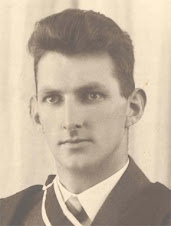Herbert arrived in Lima shortly after evangelical work has commenced in earnest in Peru. His teacher qualifications and his interest in the Peruvian Indians seemed to fit the needs of the day for writing in 1930 John Ritchie, long time resident of Peru noted not only the needs of the Indians, but the desire by those who had secured the independence of the country, to rapidly educate all their people. It was a national aspiration largely unfulfilled even in 1930 when Ritchie made these observations, but into that desire the various mission had finally tapped with some considerable success.
But that success came about after a sputtering start. The evangelical story in Peru has the flavour of toe dipping into water quickly found cold. In 1822 John Thomson, a Scottish Baptist minister arrived and was installed as the first director of public instruction. Note the willingness to appoint foreigners to this important role. By all accounts he did an excellent job of setting up schools and distributing the Spanish Bible which arrived for the first time during his tenure from the British and Foreign Bible Society. John was described as a gentle man and he surely must have been persuasive for he even convinced some priests and Roman Catholic professionals to carry on the distribution of the Bibles after he left Peru. Which he did after only two years, though like Paul it seems it was a destination and church to which he was always keen to return and encourage.
In 1825 the Presbyterians sent an envoy to explore opportunities in South America and Peru barely caught his eye. There appear then a catalogue of opportunities not quite properly exploited: Wheelwright from the American Bible Society in 1833, Bishop Taylor of the Methodist Episcopal church in 1849, a “liberal” Roman priest in 1851 called Francisco de Paula Gonzalez Vigil. And then in 1888 Francisco G Penzotti arrived and set up a large congregation in Calleo. Perhaps the earlier faltering starts ran up against the implacable Roman church, standing firm behind the protection of the constitution behind which, though reformed to allow protestant worship, the priests fought the spread of the gospel. Penzotti changed all that for he was arrested in 1890 charged with breaching the constitution by distributing Bibles and encouraging worship outside the Roman church. The case was escalated to the Supreme Court and then before the jury of the world when a photo of Francisco behind bars was conveniently published in the New York Times. The charges were dropped and he was released in 1891 to much acclaim and “winning the first battle of religious liberty in Peru”.
Thereafter there was a comparative flurry of activity. In the same year as his release the first resident missionary of the Methodist Episcopal Church arrived, a Dr Thomas B Wood. Wood was quick to realise the educational opportunities, slipped back to the US and returned with a clutch of teachers who would later make significant, and dramatic inroads into Peru. The "Regions Beyond Missionary Union" got established at this time and was later taken over by the Evangelical Union of South America in 1911. Charles Bright of the English Brethren arrived in 1893, Mr and Mrs Brand from the Holiness Church of California in 1903, the Salvation Army in 1910, the Church of the Nazarene in 1914 and the Free Church of Scotland in 1916. In 1919 the Assemblies of God commenced work with the Indians while the Christian and Missionary Alliance started work with the forest Indians. The Inland South American Missionary Union established work in Inquitos as did some independent players from the English Brethren, while the Irish Baptist Foreign Mission set up in Cuzco. The Seventh Day Adventists, though bemoaned by many missions for their “sheep stealing” did a formidable work in Peru which was recognised for its effectiveness by most, including Herbert.
So two areas of work already had their turf turned in preparation for Herbert’s arrival. The first was the wide recognition of the importance of education in lifting the average citizen from his oppressed and ignorant state, while the second was a general awakening to the need to do something for the Indians. Herbert rapidly focused on the Indians as his life’s work, and who they were and what their condition was the subject of his PhD dissertation. And the boys school at which he worked on arrival was widely recognised as an institution of excellence. Established in 1916 by the Free Church under the auspices of Mr and Mrs John A Mackay it was quickly established as “one of the finest educational establishments in the republic and is a centre of Christian witness and activity”. It still exists today.
Saturday, October 24, 2009
Subscribe to:
Post Comments (Atom)





No comments:
Post a Comment